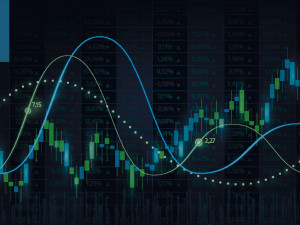
Irish Brexit doubts take gloss from Sterling
Morning mid-market rates – The majors
November 9th: Highlights
- No deal in November without backstop agreement
- Hawkish FOMC pushes dollar higher
- EBC continued growth but faces several risks
Traders remain concerned over Brexit deal
Since the start of negotiations, there has been a view that Brexit will be overall bad for the UK economy and therefore the pound. That view has pushed the pound to a low of 1.2661 so far this year. Within that overall bearish sentiment, there has been an acceptance that Brexit will happen, but the short-term market is driven by the terms the UK is able to achieve for its departure from the EU.
No deal is better than a bad deal has become the clarion call of the ruling Conservative Party’s “Brexiteer wing”. While the focus has been on the Irish border conundrum for some time it has now apparently come down to the backstop agreement that will tie the UK to the EU while negotiations continue.
Continuing the “Brexit rhetoric” is the contention that there is no agreement without 100% agreement. UK Prime Minister Theresa May is adamant on two important matters; first that the UK will leave the single market and customs union and second that any agreement will apply to the entire UK. While Mrs. May retains that position, she can rely to some extent on the support of her Party, but should there be any backsliding she will struggle to get approval from Parliament once a deal is published.
The pound fell yesterday as optimism over a deal being agreed this month faded a little. It reached a low of 1.3044 versus the dollar and has remained close to that level overnight.
Sterling’s recent rally versus the single currency continued yesterday, but it appears to be running out of steam. The pound looks overbought versus the euro and some correction may now be seen, the depth of which depends on the markets continued belief that a deal can be completed.
Considering your next transfer? Log in to compare live quotes today.
Powell continues to talk up the U.S. Economy
Despite the markets confused appearance over the results of the midterm elections, the dollar index rallied, reaching a high of 96.74 and has continued to climb overnight and is now closing in on its 2018 high.
Despite the change in the political map in the U.S. following Tuesday’s vote, the economy is on course for further growth in Q4 and a rate hike in December. The Fed is unfazed by the recent equity market correction which it has categorized as “healthy”. The market continues to focus on the interest rate differential that is continuing to widen versus G7 economies although with Canada hiking, the Bank of England’s most recent meeting appearing more hawkish and the ECB withdrawing stimulus, that advantage will not continue forever.
The fallout from the election continues with President Trump firing his Attorney General and appointing a “more compliant” replacement who will question the scope of the investigation that is currently taking place into Trump’s relationship with Russia.
Draghi sees continued growth but risks mounting
Having supported the economy for close to ten years since the financial crisis, the ECB is running out of ammunition as it ends its asset purchase scheme which has kept liquidity in the bond markets high and considers when it will start to tighten monetary policy.
In its forecasts, the ECB predicted that the Italian economy would grow more slowly than the Government in Rome expects which will add to its budget deficit possibly increasing it from 2.4% in 2019 and bringing into doubt the reductions expected in 2020/21.
These comments ratcheted up the pressure on both Rome and the EU commission to find a solution to the standoff that is developing over the demand that Rome rethinks next year’s spending.
The single currency fell yesterday versus a strengthening dollar reaching a low of 1.1351 and similar to the dollar index, has remained around that level overnight.
With Eurozone inflation at its highest level since 2012, the nightmare scenario of low growth and rising inflation faces the ECB as we enter the new year. With the stimulus cupboard bare and the currency falling Sr. Draghi may need to perform one more miracle before he leaves office late next year.
Have a great day!

About Alan Hill
Alan has been involved in the FX market for more than 25 years and brings a wealth of experience to his content. His knowledge has been gained while trading through some of the most volatile periods of recent history. His commentary relies on an understanding of past events and how they will affect future market performance.”



